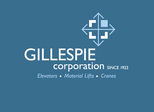- Glenn Siegel
- Jan 24, 2018
Above Giovanni Russonello’s December 1 New York Times article about the added burden of being female in the marginalized and male-dominated world of jazz, was a large photo of the trumpeter Jaimie Branch. The newspaper piece makes the point that although gender discrimination is alive and well in jazz, the ship is starting to right. Over 100 of us got to see Jaimie Branch in the flesh on Saturday, January 20, as Pioneer Valley Jazz Shares presented her Quartet at the 121 Club in Easthampton, Massachusetts.
The subject of gender never came up during Branch’s visit, but the burden of being a creative artist in the time of Trump did. On the first anniversary of the would-be dictator’s ascent to power, Branch and her ensemble, Lester St. Louis, cello, Jason Ajemian, bass and Mike Pride, drums, gave a spirited concert of wall-crumbling proportions.
Coinciding with women-led resistance demonstrations held throughout the country, the concert reinforced the notion that we will no longer conform to norms that do not serve human needs. The band blasted through melodies found on Branch’s heavily lauded debut recording, Fly or Die (2017, International Anthem), infusing them with the same force that brought down the stone perimeter of Jericho.
The themes from the 35-minute recording were stretched and expanded over the course of the 80-minute concert, resulting in a suite-like journey through a range of moods. Although there were sections of intense swing, molasses paced walks and searing beauty, much of the evening was spent in an abstract, fever dream from which we were reluctant to wake.
I kept thinking of the Pauline Oliveros concept of Deep Listening as I watched Branch’s closed eyed expression while the other musicians played. “Hear with your ears, listen with your heart,” was Oliveros’ guiding principle. On a promotional video for Fly or Die, Branch says, “I like to listen to the first five seconds of whatever happens, like really pay attention, to just turn on your ears right away and then ‘whoosh,’ like scattering that to a million different pieces. You can get into this zone, you’re almost looking at everything from above, you’re able to hear everything, you’re able to play what you want effortlessly, it’s like a teleportation space.”
Branch’s star is certainly rising. The record (released on both CD and LP) is on its fourth pressing (“It’s about to break even,” she laughed.) It seemed to show up on everyone’s Top 10 list of 2017. She will be a featured soloist in an upcoming performance of Julius Eastman’s “Trumpet,” part of an important three-week retrospective of the late composer’s work at The Kitchen. The gigs are starting to materialize.
These shows in New York, Easthampton and Philadelphia were the young cellist Lester St. Louis’ first opportunity to be on stage with Branch. (Tomeka Reid usually has the cello chair.) He acquitted himself superbly. Chad Taylor, the drummer on Fly or Die told Branch, “Just that name, it sounds like he can play.” Yes, he can. St. Louis will also take part in the Julius Eastman retrospective. It turns out Priscilla Page and I saw him play cello as part of Branden Jacobs-Jenkins’ celebrated New York production of “An Octoroon” in 2015.
Chad Taylor had a gig with David Murray on Saturday, so we got to hear Mike Pride, a forward-thinking young veteran with an already impressive discography and a plan for the future. A mellowing wild man, he nevertheless played possessed, unbridled. He augmented our 4-piece, Gretsch Catalina Club kit, with extra drums, cymbals and little percussion to produce waves of rhythm, always in concert with what was going on around him. For the last two years he has put real bread on his table playing large American venues opening for Amy Schumer, with Jason Roebke and Schumer’s brother, Jason Stein.
Jason Ajemian is featured on Fly or Die, and is integral to the success of the project. His history with Branch goes back to their time together in Chicago. The bassist now lives much of the year in Talkeetna, Alaska, (population 900), where he is a pilot and airplane mechanic. Like the rest of the band, he is a committed non-conformist, although on Saturday his role and his sound production largely followed jazz convention. For a unique listening experience, check out his 2014 Delmark release, Folklords.
One thing’s for sure: the shape of jazz to come will look and sound different than what came before. Given our current political situation (and the lack of collective imagination that has led us to where we are) we certainly need something new and different. As always, artists will lead the way. Jaimie Branch is one of them.



























